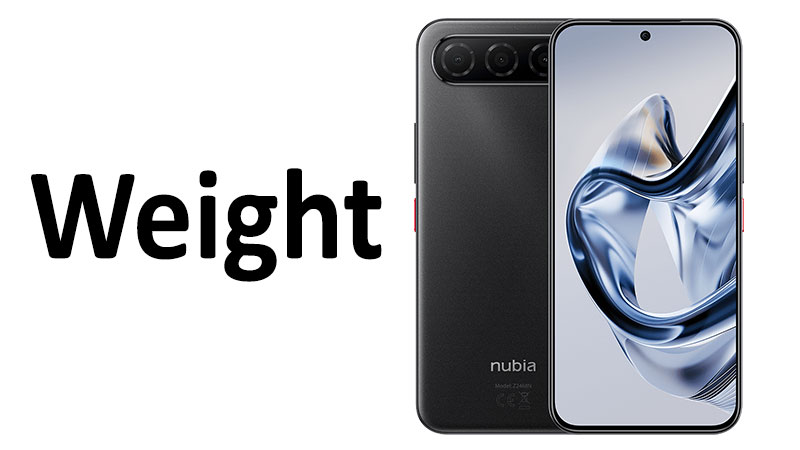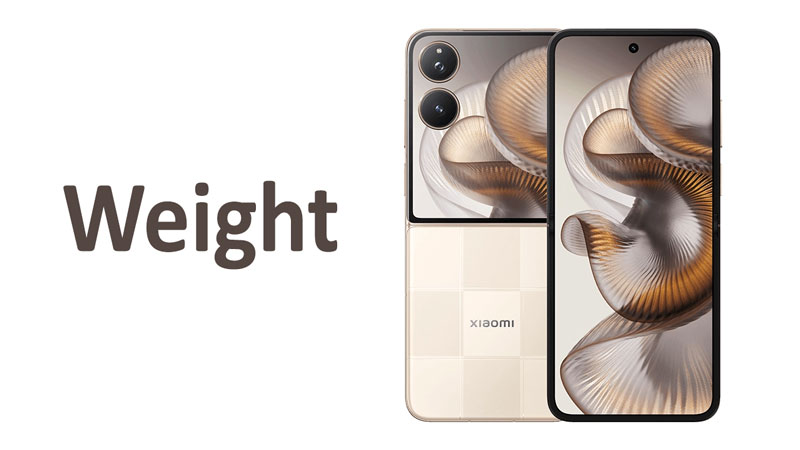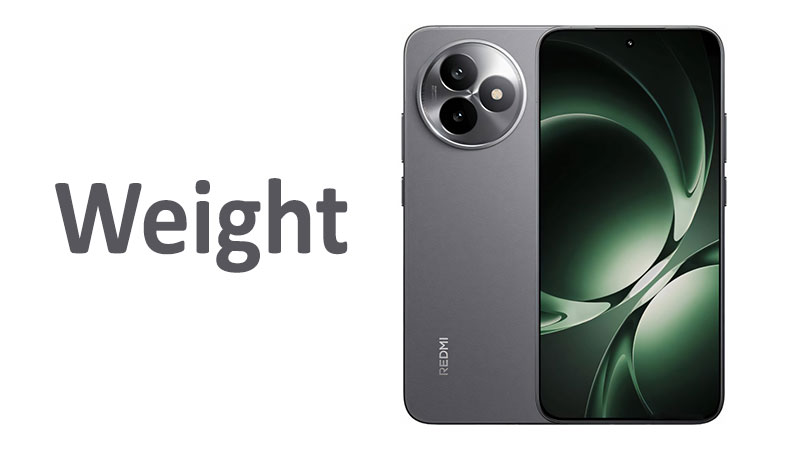The ZTE nubia Air Weight, measured at exactly 172 grams, immediately positions the device as a standout. This specific metric, which translates to approximately 6.07 ounces, determines the phone’s overall comfort. Therefore, understanding this weight is crucial for any potential buyer. The physical dimensions of a smartphone dramatically impact the daily user experience. We use these devices constantly throughout the day. Consequently, a lighter phone reduces strain and fatigue. This article offers a deep dive into the 172g profile of the ZTE nubia Air. It also compares this figure against key market rivals. This analysis will help you decide if the nubia Air offers the portability you truly need.
The Significance of Smartphone Weight and Portability
Weight has become a decisive factor in modern smartphone design. For many years, phones grew heavier due to larger screens and bigger batteries. However, consumers now prioritize comfort and effortless handling. Heavy phones often cause physical discomfort during extended use. This problem is especially true when lying down or using the device one-handed. Tech professionals call this strain “tech neck” or wrist fatigue. Consequently, manufacturers now seek the perfect balance. They must combine powerful performance with a highly portable form factor.
The specific mass of 172g puts the ZTE nubia Air in a desirable lightweight category. This weight class generally defines a comfortable, premium handling experience. Phones surpassing 200 grams often feel cumbersome or bulky. Furthermore, this heavy feeling is exacerbated when a protective case is added. The nubia Air aims to avoid that bulk entirely. It delivers performance without creating an exhausting user experience. This focus on physical comfort marks a key selling point for the device.
ZTE nubia Air Weight: Detailed Specifications
The ZTE nubia Air achieves its impressive weight of 172 grams (6.07 ounces) through meticulous engineering. This is especially notable when considering its internal components. The phone features a large 6.78-inch AMOLED display. Moreover, it houses a substantial 5000mAh battery. Combining these large parts with a lightweight body represents a significant technical feat.
The Grams and Ounces Breakdown
The measurement of 172g is the universally accepted specification. This figure appeals primarily to a global, technical audience. In contrast, 6.07 oz offers context for markets using imperial measurements, like the United States. This difference in units remains important for clear consumer communication. Understanding the conversion helps buyers compare the ZTE nubia Air accurately against different brands.
Furthermore, the weight works in tandem with the phone’s thickness. The nubia Air boasts an overall thickness of just 6.7 millimeters. Some parts of the body measure even thinner, at 5.9 millimeters. This ultra-slim profile further enhances the perception of lightness. A thin device is often easier to grip. It also slides effortlessly into pockets and small bags. Ultimately, the combined lightweight and slim design define the Air moniker.
Specialized Comparison: Achieving the Power-to-Weight Ratio
The ZTE nubia Air offers an impressive weight-to-battery ratio. This specific point highlights its engineering superiority in the mid-range category. For instance, the phone packs a massive 5000mAh cell. Many flagship phones weighing over 200 grams often include a smaller battery capacity.
The nubia Air provides a large 5000mAh battery while staying at 172g. This delivers superb endurance without the added bulk. Conversely, competitors often sacrifice battery size to achieve lower weight targets. Therefore, a user gains both portability and all-day power with the nubia Air. This unique combination serves as a massive advantage for power users and commuters alike. It addresses the common anxiety of low battery life in slim phones.
Ergonomic Benefits: Why 172g Matters
The ergonomic impact of a lightweight phone cannot be overstated. Smartphones are integral tools used for hours every single day. Therefore, prolonged holding dictates user comfort and physical health. The 172g weight class is ideally suited for optimal hand comfort.
Reduced Musculoskeletal Strain
Lighter devices decrease the load placed on the hands and wrists. This reduction is especially noticeable during long reading sessions or video viewing. Studies show a direct correlation between phone weight and the severity of hand pain. By staying below the 180-gram threshold, the ZTE nubia Air minimizes this risk. It allows for longer, more comfortable periods of use. Consequently, users experience less muscle fatigue in their fingers and forearms.
Furthermore, a lighter phone reduces strain on the neck. People often bend their heads forward when viewing their screens. This posture, known as “tech neck,” increases stress on the cervical spine. Holding a 172g device lower or further out places less resistance on the body. This small weight difference provides cumulative health benefits over time. Hence, the nubia Air promotes a slightly healthier mobile experience.
Enhanced Single-Handed Usability
Most users prefer to operate their phone with a single hand. This action is critical when multitasking, such as walking or carrying items. A 172g phone feels secure and manageable in one hand. Conversely, heavier phones require significant grip strength. They also force the user to shift their hold frequently for stability. This constant re-gripping causes increased hand fatigue and discomfort.
The ZTE nubia Air’s thin, balanced design also contributes to its comfortable feel. The weight distribution within the 172g frame is expertly managed. This balance ensures the phone does not feel top-heavy or awkward. Consequently, the user maintains better control. This makes one-handed texting or scrolling far more intuitive and less tiring.
Comprehensive Competitor Weight Analysis
To truly appreciate the 172g weight of the ZTE nubia Air, we must compare it to its closest rivals. The market divides devices into three main weight classes: ultra-light, standard, and heavyweight. The nubia Air competes directly in the ultra-light and standard categories.
Comparison Against Flagship Rivals
Flagship phones often use premium, dense materials like stainless steel frames. This often results in significantly higher weights.
- Samsung Galaxy S25: The base S25 model is a fierce competitor in the lightweight segment. It weighs approximately 162 grams (5.71 oz). This makes the S25 technically lighter than the nubia Air by about 10 grams. However, the S25 typically includes a smaller 4000mAh battery. The ZTE nubia Air, therefore, provides a better power density, offering 25% more battery capacity at only a 10g weight penalty.
- Apple iPhone 16: The standard iPhone 16 model usually weighs around 170 grams (about 6.0 oz). The nubia Air sits almost exactly in this highly competitive weight class. Both phones target users who demand portability. However, the iPhone 16 commands a much higher price point. The nubia Air offers comparable lightweight handling for a mid-range budget.
- Samsung Galaxy S25 Edge: This model focuses on extreme slimness. It measures 5.8mm thick and weighs about 163 grams (5.75 oz). The S25 Edge is slightly lighter and thinner. Nevertheless, it also sacrifices some battery capacity, generally staying below the nubia Air’s 5000mAh. This comparison shows the nubia Air chose a 172g weight specifically to maximize battery life.
Comparison Against Mid-Range and Gaming Phones
Mid-range and specialized phones present a different set of comparison points. Gaming devices, for example, prioritize cooling systems and large batteries. This often increases their total mass.
- Google Pixel 9a: This device is a popular mid-range choice. It often settles around 186 grams. The nubia Air (172g) is noticeably lighter than the Pixel 9a by 14 grams. This difference translates into a more comfortable daily carrying experience. The nubia Air offers better pocketability and reduced long-term hand stress.
- ZTE nubia RedMagic 10 Air: ZTE’s own gaming-focused RedMagic series offers a useful internal comparison. The RedMagic 10 Air, a high-performance model, weighs around 205 grams (7.23 oz). This 33-gram weight difference is immediately perceptible. Users prioritizing pure gaming power accept the bulk of the RedMagic. Conversely, users valuing lightweight, all-day comfort will overwhelmingly prefer the 172g nubia Air. This highlights a clear differentiation within ZTE’s own product lineup.
- Overall Market Standard: Most large-screen smartphones (6.7 inches and above) currently average between 190 and 210 grams. At 172 grams, the ZTE nubia Air successfully undercuts this standard average by a significant margin. This makes it one of the lightest large-screen phones available in the mid-range segment.
Pros and Cons of the 172g ZTE nubia Air Weight
The ultra-lightweight design of the ZTE nubia Air brings several distinct advantages and a few necessary trade-offs. Buyers must carefully weigh these factors before making a purchasing decision. The overall goal is achieving balance in the device’s design.
Advantages of the 172g Weight
The lightweight nature of the phone delivers several key benefits for the consumer.
- Superior Portability: The 172g profile makes the phone exceptionally easy to carry. It feels almost unnoticeable in a pocket or handbag. This ease of transport is essential for constant daily movement.
- Exceptional Battery Efficiency Ratio: The nubia Air maximizes battery capacity relative to its weight. The 5000mAh cell offers class-leading endurance at just 172g. This eliminates the need to carry portable chargers or battery banks.
- Enhanced Grip and Hand Comfort: The reduction in weight directly translates to reduced fatigue. Long scrolling sessions and video calls become significantly more comfortable. This improvement benefits older users or those with smaller hands.
- Sleek Aesthetic Appeal: The lightweight build is coupled with the 6.7mm slimness. This combination creates a sophisticated, modern aesthetic. The phone looks and feels premium without the heaviness associated with high-end bulk.
Potential Trade-offs of the Lightweight Design
Engineering a device to be this light at this size requires certain material choices. These choices sometimes introduce minor drawbacks.
- Perceived Durability Concerns: Lighter phones may use materials like lighter aluminum alloys or reinforced plastic composites. Consumers might perceive these materials as less robust than the heavy steel or ceramic used in flagships. However, the nubia Air boasts high IP68/IP69K water resistance. This rating mitigates some of those durability concerns.
- Thermal Management Challenges: A thinner, lighter design inherently offers less material for heat dissipation. The Unisoc T8300 processor is highly efficient. Nevertheless, intense, prolonged tasks like heavy gaming might cause the device to heat up slightly more quickly. The slim profile limits the space for extensive vapor chamber cooling.
- Potential for Flex or Bend: Extreme slimness (5.9mm/6.7mm) always carries a marginal risk of physical stress. Careful handling remains important, especially when placing the phone in tight back pockets. Using a quality protective case is highly recommended for all ultra-slim devices.
Important Points for Buyers and Readers
Consumers interested in the ZTE nubia Air must consider how its 172g weight influences the phone’s overall value proposition. The weight and design choices clearly define the intended user base.
Target Audience: The Comfort and Style Seeker
The ZTE nubia Air targets a specific demographic. This includes professionals, students, and commuters who prioritize ease of use. They want a large, vivid screen (6.78-inch AMOLED). However, they also refuse to tolerate the bulky feel of many comparable devices. The 172g weight signals a focus on style and practicality over brute force performance. The target user values a seamless experience in their daily routine.
Performance Balance
The phone uses the Unisoc T8300 processor. This chipset offers solid performance for everyday tasks, social media, and light gaming. The choice of this efficient chip is intentional. It ensures minimal heat generation. Furthermore, it complements the lightweight design perfectly. A high-end flagship chip might have required a heavier body to manage heat. The nubia Air instead chooses a balanced, highly energy-efficient configuration. This decision maximizes the impact of the 5000mAh battery while maintaining the 172g profile.
Value and Price Point
The ZTE nubia Air is generally priced as an affordable mid-range option, around $279 or €249. This price is highly competitive, especially for a device offering a massive screen and ultra-light construction. The 172g weight is effectively a premium feature offered at a non-premium price. Buyers get the ergonomic benefits of high-end slim phones without paying the flagship price tag. This provides excellent value for money in the portability segment.
The Material Difference
Achieving 172g required a focus on non-metallic internal components and efficient layering. While the exterior looks sleek, the internal construction prioritizes lightweight resilience. The phone’s overall balance feels fantastic. This specific combination of light weight and slim dimensions dictates the user’s perception of quality. A quick in-hand test confirms the comfort delivered by the 172g mass. It feels responsive, comfortable, and effortlessly light. This tactile feedback is difficult to convey but critical to the buying experience.
Conclusion: Making an Informed Decision
The ZTE nubia Air successfully carves out a niche in the saturated smartphone market. Its defining feature is the meticulously achieved weight of 172 grams (6.07 ounces). This weight is not merely a number. Instead, it represents a deliberate engineering choice. It offers users superior comfort and exceptional portability. This figure positions the nubia Air as one of the lightest large-screen devices available today.
The phone provides a harmonious balance between large battery capacity and low physical mass. It achieves a 5000mAh battery while remaining lighter than many rivals with smaller cells. Therefore, the nubia Air is the ideal choice for consumers. Specifically, this includes anyone who suffers from hand fatigue or values all-day pocketability. While it might concede raw processing power to heavier gaming flagships, its ergonomic advantage is unmatched in its price bracket.
Ultimately, the ZTE nubia Air delivers a compelling proposition. It provides flagship-level comfort and endurance for a budget-friendly price. The 172g weight is the core of this value. It ensures that your smartphone remains a comfortable tool, not an uncomfortable burden. Choosing the nubia Air means prioritizing physical comfort and long-term usability.
Frequently Asked Questions (FAQ)
1. What is the exact weight of the ZTE nubia Air? The ZTE nubia Air weighs precisely 172 grams.
2. How much is 172 grams in ounces? One hundred seventy-two grams converts to approximately 6.07 ounces.
3. Does the low weight mean the battery is small? No, the ZTE nubia Air actually includes a large 5000mAh battery. The 172g weight highlights excellent engineering efficiency.
4. How thin is the ZTE nubia Air? The nubia Air is ultra-slim, measuring only 6.7 millimeters in total thickness.
5. How does the 172g weight impact gaming? The light weight makes holding the large phone (6.78-inch screen) for extended gaming sessions much more comfortable. This reduces hand strain significantly.



